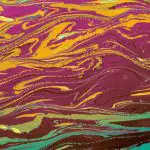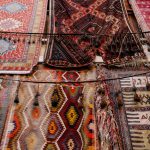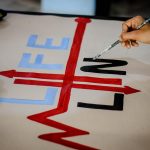If you’re interested in fabric dyeing, you may have come across the term ‘disperse dye.’
Disperse dye is a type of dye that is used specifically for synthetic fibers, such as polyester, nylon, and acrylic.
In this article, you’ll learn what disperse dye is, how it works, the types of synthetic fibers it can be used with, its advantages and limitations, and the best practices for using it.
Disperse dye is unique in its ability to color synthetic fibers, which can be difficult to dye using traditional methods.
This is because synthetic fibers are often hydrophobic, meaning they repel water and resist dye absorption.
Disperse dye, however, is designed to adhere to the surface of synthetic fibers and penetrate their structure, resulting in a vibrant and long-lasting color.
If you’re curious about how disperse dye works, the types of synthetic fibers it can be used with, and the best practices for dyeing with it, keep reading to learn more!
Table of Contents
What are Disperse Dyes?
Disperse dyes are a type of dye that’s perfect for coloring synthetic fibers because they disperse evenly throughout the fabric. Unlike other types of dyes, disperse dyes aren’t soluble in water, making them ideal for dyeing synthetic fibers such as polyester, nylon, and acrylic.
These dyes are typically composed of small molecules that can penetrate the surface of the fiber, resulting in a vibrant and long-lasting color. One of the key characteristics of disperse dyes is their ability to withstand high temperatures. This is because they’re often applied to synthetic fibers using a process called transfer printing, which involves transferring the dye from paper to the fabric using heat.
Because disperse dyes can withstand high temperatures, they’re able to bond more effectively with the synthetic fibers, resulting in a more durable and vibrant color. Another advantage of using disperse dyes is that they’re resistant to fading and bleeding. This is because the dye molecules can penetrate deep into the fibers, rather than simply adhering to the surface.
As a result, the color is less likely to fade or bleed during washing, making it ideal for use in clothing and other textiles that are frequently laundered. Overall, disperse dyes are a versatile and effective option for coloring synthetic fibers, offering a range of benefits including even dispersion, high-temperature resistance, and resistance to fading and bleeding.
How do Disperse Dyes Work?
You might be surprised to learn that Disperse Dyes don’t actually dissolve in water. Instead, they attach themselves to the fibers of the fabric through a process called sublimation. This is when the dye particles are heated and transformed from a solid to a gas, which then penetrates the fibers of the fabric and attaches to them. The gas then cools and solidifies, trapping the dye particles within the fibers of the fabric.
One of the reasons Disperse Dyes are so popular is because of their long-lasting color. Since the dye particles are trapped within the fibers of the fabric, they’re less likely to fade or bleed when washed. This makes them ideal for use on synthetic fabrics such as polyester, which are notoriously difficult to dye with other types of dyes.
Another advantage of Disperse Dyes is their ability to create vibrant colors. Since the dye particles are able to penetrate the fibers of the fabric, they’re able to create a uniform and intense color. This makes them ideal for use in textiles such as sportswear, outdoor gear, and upholstery, where bright and long-lasting colors are a must.
Types of Synthetic Fibers Used with Disperse Dyes
You’ll be interested to know that there are three common synthetic fibers that work well with disperse dyes: polyester, nylon, and acrylic. These fibers are popular in the textile industry because of their durability, resistance to wrinkling and shrinking, and ease of care. When dyed with disperse dyes, they produce vibrant and long-lasting colors that are ideal for a variety of applications.
Polyester
Polyester fabric doesn’t absorb water easily, making it a great candidate for disperse dyeing. Disperse dyes are specifically designed for dyeing synthetic fibers such as polyester, nylon, and acetate.
When applied to polyester fabric, disperse dyes are absorbed by the fibers through a process called sublimation. This process involves the dye molecules turning into gas and then being trapped in the polyester fibers.
One of the benefits of using disperse dyes on polyester is that they can produce vibrant, long-lasting colors. Because the dye molecules are trapped within the polyester fibers, they are resistant to fading and washing out.
Additionally, disperse dyes can be used to create a wide range of effects on polyester fabric, including ombre, tie-dye, and other patterns. Overall, polyester is a popular choice for disperse dyeing due to its durability, resistance to water, and ability to hold vibrant colors.
Nylon
If you want a fabric that can withstand wear and tear, nylon is a great option to consider for your dyeing projects. Nylon is a synthetic polymer that is known for its durability, strength, and resistance to abrasion. It is also lightweight, quick-drying, and easy to care for, making it a popular choice for activewear, outdoor gear, and lingerie. Nylon can be dyed using disperse dyes, which are specially formulated to work with synthetic fibers like nylon.
Disperse dyes are typically dispersed in a carrier liquid, such as dimethylformamide, to ensure even distribution throughout the fabric. These dyes are then applied to the fabric using heat and pressure, which causes the dye molecules to penetrate the surface of the nylon fibers and become locked in place. Disperse dyes are ideal for nylon because they offer excellent colorfastness and are resistant to fading, bleeding, and staining. They are also able to produce bright and vibrant colors that are long-lasting and durable.
| Advantages | Disadvantages |
|---|---|
| Resistant to abrasion | Absorbs moisture easily |
| Lightweight | Prone to static cling |
| Quick-drying | Can pill over time |
| Easy to care for | Not as breathable as natural fibers |
Overall, nylon is a great option for dyeing projects that require a durable, lightweight, and easy-to-care-for fabric. Disperse dyes are the perfect choice for achieving bright and long-lasting colors on nylon, making it a versatile fabric that can be used for a wide range of applications.
Acrylic
Acrylic fabric is a great choice for dyeing projects because it’s soft, warm, and has a wool-like texture that’s perfect for winter clothing. Plus, acrylic is a synthetic fiber that’s resistant to wrinkles and shrinking, so it’s easy to care for. Here are four things to know about dyeing acrylic fabric with disperse dye:
-
Disperse dye is the best type of dye to use for acrylic fabric because it’s designed to bond with synthetic fibers like acrylic.
-
It’s important to use high heat when dyeing acrylic with disperse dye because heat helps the dye molecules penetrate the fibers and achieve a vibrant color.
-
Acrylic fabric can be dyed in a washing machine, but it’s important to use hot water and a long cycle to ensure that the dye is properly set.
-
After dyeing acrylic fabric with disperse dye, it’s important to rinse it thoroughly to remove any excess dye. This will help prevent the dye from bleeding or fading over time.
Advantages of Disperse Dyes
You’ll appreciate the advantages of using disperse dyes for vibrant and long-lasting colors on your synthetic fabrics. Disperse dyes are particularly suited for dyeing polyester and other synthetic fibers. They are designed to disperse evenly in the fiber, producing consistent and uniform coloration.
One of the most significant benefits of using disperse dyes is their resistance to fading. These dyes are highly resistant to light, heat, and chemical agents, ensuring that your fabrics retain their vibrant colors for a long time. This characteristic makes disperse dyes ideal for outdoor clothing, swimwear, and other fabrics that are exposed to the sun and other environmental elements.
Another advantage of using disperse dyes is their versatility. These dyes can be used to achieve a wide range of colors and shades, from bright and bold hues to subtle pastels. Additionally, disperse dyes can be used on a variety of synthetic fabrics, including polyester, nylon, and acetate. This versatility means that you can achieve your desired color and effect on a wide range of fabrics.
| Advantages of Disperse Dyes | |
|---|---|
| Resistance to fading | Vibrant colors that last long |
| Versatility | Wide range of colors and fabrics |
| Uniform coloration | Consistent and even dyeing |
Disperse dyes offer many advantages for dyeing synthetic fabrics. They provide long-lasting and vibrant colors, are highly resistant to fading, and can be used on a variety of synthetic fabrics. By choosing disperse dyes, you can achieve consistent and uniform coloration, ensuring that your fabrics look great for a long time.
Limitations of Disperse Dyes
When using disperse dyes, you may run into some limitations that you should be aware of. Disperse dyes have a limited use for natural fibers, as they aren’t very effective on cotton or wool. Achieving certain colors can also be difficult with disperse dyes, which may limit your design options.
Finally, there may be potential health risks associated with working with disperse dyes, so it’s important to take proper safety precautions.
Limited Use for Natural Fibers
Unfortunately, natural fibers like cotton and wool won’t work well with disperse dyes because they’re designed to work best with synthetic fibers. Disperse dyes are insoluble in water and require high temperatures to dye synthetic fibers like polyester, nylon, and acetate.
This means that natural fibers cannot withstand the high temperatures required for the dyeing process, making it impossible for disperse dyes to work effectively with them. Here’s why:
- Disperse dyes need high temperatures to be effective, which can damage natural fibers and alter their texture.
- Natural fibers are often more absorbent than synthetic fibers, which means they may not retain the dye as well as synthetic fibers do.
If you want to use disperse dyes for your textile projects, it’s important to understand that they’re only suitable for synthetic fibers. While natural fibers have many advantages, they’re unfortunately not compatible with disperse dyes.
Difficulty in Achieving Certain Colors
Now that you know disperse dyes have limited use for natural fibers, let’s talk about another challenge that comes with using these dyes.
You may find it difficult to achieve certain colors with disperse dyes. That’s because the dye molecules are larger and less soluble than other types of dyes, which means they don’t penetrate the fibers as deeply.
This can be particularly problematic when working with darker shades or highly saturated colors, such as bright reds or deep blues.
In some cases, you may need to use a higher concentration of dye or repeat the dyeing process multiple times to get the desired color.
It’s also important to note that disperse dyes have a limited color range compared to other types of dyes, so you may need to experiment with different dye combinations to achieve the color you want.
Despite these challenges, disperse dyes can still be a great option for synthetic fibers, especially when durability and colorfastness are important.
Potential Health Risks
It’s important to be aware of the potential health risks associated with the use of disperse dyes, as they can be harmful if not handled properly. Inhaling the dye particles can cause respiratory irritation and even lung damage over time. Skin contact with these dyes can also cause irritation, and prolonged exposure can lead to dermatitis or even skin cancer.
To minimize the risk of harm, it’s important to wear protective clothing, gloves, and a face mask when handling disperse dyes. Work in a well-ventilated area and avoid inhaling the dye particles. Proper disposal of any leftover dye is also important, as it can contaminate water sources and harm aquatic life.
By taking these precautions, you can enjoy the benefits of disperse dyes while minimizing the potential health risks.
Application of Disperse Dyes
Using disperse dyes to color synthetic fibers is like sprinkling tiny, vibrant particles onto a blank canvas, resulting in a stunning and lasting masterpiece. Disperse dyes are widely used in the textile industry to color polyester, nylon, and acetate fibers. They are known for their excellent lightfastness and heat resistance, making them ideal for outdoor applications and sportswear.
Here are four ways disperse dyes are applied to synthetic fibers:
-
High-temperature dyeing: This process involves heating the dye and the fabric to high temperatures, allowing the dye particles to penetrate the fibers. This method ensures that the color is evenly distributed and long-lasting.
-
Low-temperature dyeing: This process involves using a carrier or a dispersing agent to help the dye particles penetrate the fibers at lower temperatures. This method is ideal for delicate fabrics that cannot withstand high temperatures.
-
Printing: Disperse dyes can be used for printing designs onto synthetic fabrics. The dyes are printed onto paper and then transferred onto the fabric using heat and pressure.
-
Sublimation printing: This process involves printing the design onto a transfer paper and then transferring the design onto the fabric using heat and pressure. This method is ideal for creating intricate designs and patterns on sportswear and other synthetic fabrics.
Disperse dyes are versatile and reliable dyes that are widely used in the textile industry. They offer excellent colorfastness and durability, making them ideal for outdoor applications and sportswear. The various methods of applying disperse dyes provide a range of options for textile designers and manufacturers to create stunning and lasting masterpieces.
Best Practices for Using Disperse Dyes
You’ll want to follow these best practices to ensure successful and vibrant coloring of your synthetic fibers with these versatile and reliable dyes. First and foremost, it’s crucial to select the right dye for your specific application. Disperse dyes come in a range of shades and strengths, so make sure you choose one that will work best for your particular fabric and desired color.
Next, it’s essential to prepare your fabric properly before dyeing. Synthetic fibers, in particular, require some extra attention when it comes to preparation. You’ll want to make sure your fabric is clean and free of any residual oils or sizing. It’s also important to pre-treat the fabric with a washing soda solution to help open up the fibers and allow the dye to penetrate evenly.
When it comes to actually dyeing the fabric, it’s important to follow the manufacturer’s instructions closely. Disperse dyes typically require high temperatures and extended dye times, so be patient and give the fabric plenty of time in the dye bath. Additionally, make sure to thoroughly rinse the fabric after dyeing to remove any excess dye and prevent bleeding or fading.
To further help you get the most out of your disperse dyeing experience, here’s a helpful table outlining some of the key factors to consider when working with these dyes:
| Best Practices for Using Disperse Dyes | |
|---|---|
| Factor | Considerations |
| Dye selection | Choose a dye that’s appropriate for your fabric and desired color. |
| Fabric preparation | Clean and pre-treat the fabric to ensure even dyeing. |
| Dyeing process | Follow instructions closely, including temperature and duration of dye bath. |
| Rinsing and finishing | Thoroughly rinse fabric after dyeing to remove excess dye and prevent bleeding/fading. |
By following these best practices and utilizing the tips and tricks outlined in the table, you can achieve vibrant and long-lasting color for your synthetic fabrics using disperse dyes.
- Tetron Fabric for Marine Applications: Durability and Use Cases - June 18, 2025
- Tetron Fabric for Outdoor Furniture: Weather Resistance and Care - June 18, 2025
- Tetron Fabric for Wall Coverings: Style and Application Tips - June 18, 2025





